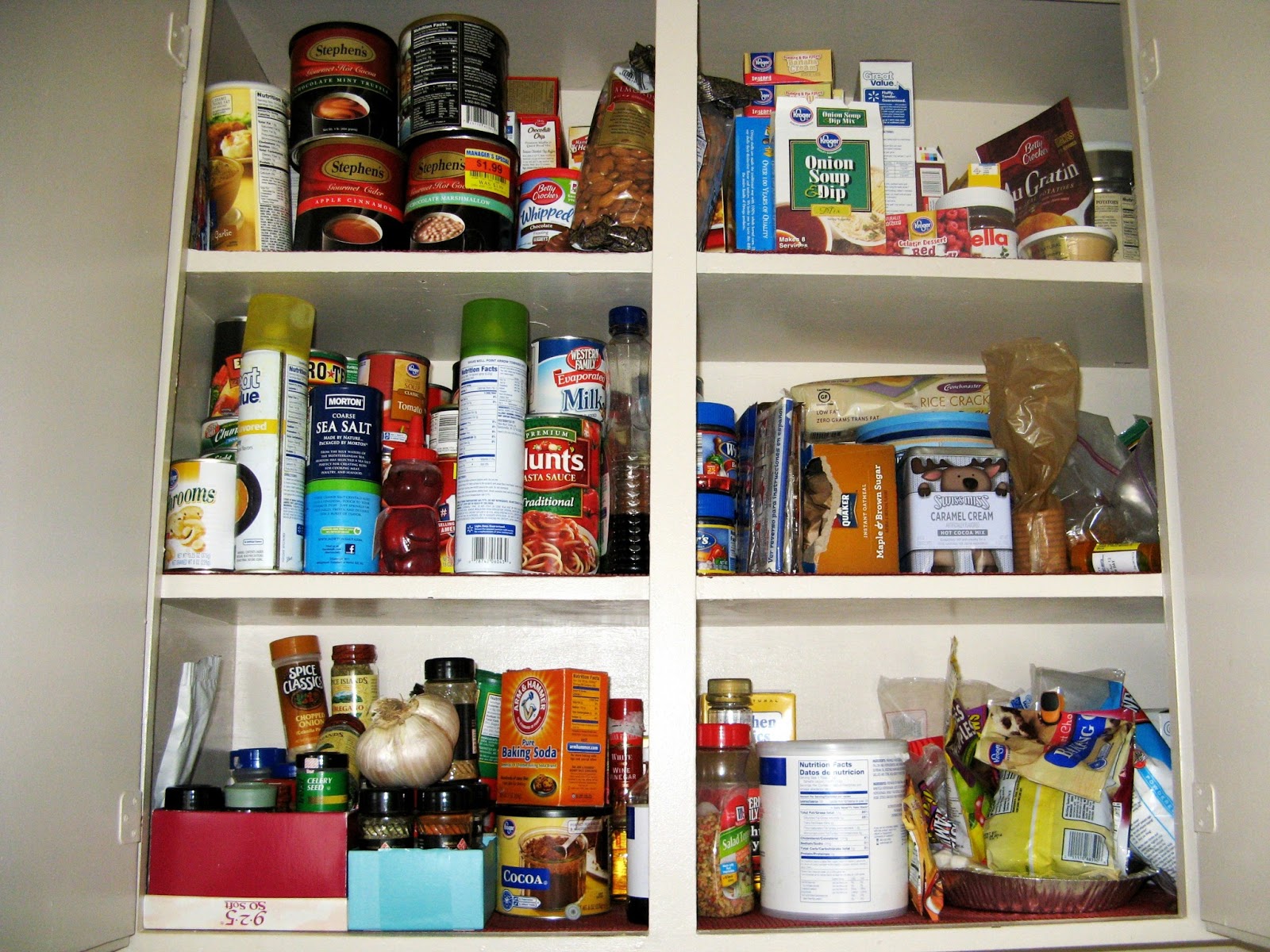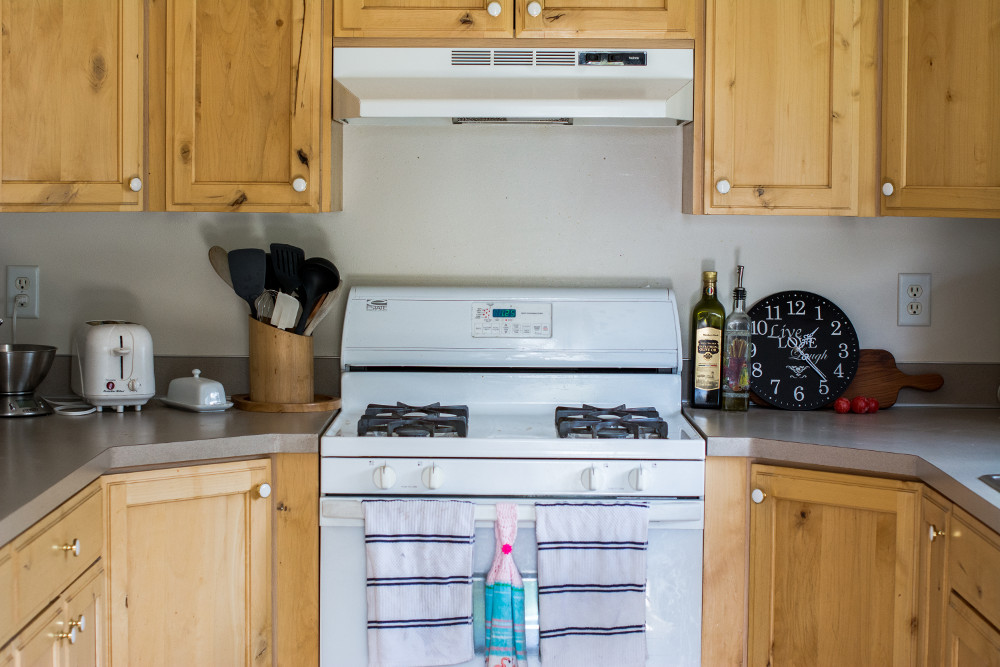In one of the books I just finished reading, The Kitchen Counter Cooking School by Kathleen Flinn (affiliate link), she cites a pretty staggering statistic — American consumers throw away approximately 25-30% of the food we buy, which accounts for hundreds and hundreds of wasted dollars per year, not to mention a strain on our earth’s resources and the sickening realization that while millions go hungry every day, so many of us are wasting almost a third of what we purchase. Additionally, 10-15% of food produced goes to waste because it’s never harvested or rejected by supermarkets due to being outwardly blemished. In other words, that’s FORTY PERCENT of produced food going to waste every single year in our country!
While reading the book, I wanted to say that I wasn’t part of the problem, but the truth was in the trash–as I read, I realized with a guilty squirm in my stomach that I’d been ignoring the nectarines in our fruit bowl for a few too many days, and their sickly overripe scent was soon going to necessitate their new home being in the garbage can since I was hit with a wave of stench every time I walked in the door, a fact I was only willing to put up with for so long. I also had produce drawers in the fridge that a week prior had been full to the brim, but which were now cut down to almost empty by a massive cleaning out of the fridge, where more than one bag of greens was lost and many green onions and old bits of parsley and cilantro met their ends.
In that same book, Flinn puts forward a few of the reasons why we waste so much of our food, at least in the home. First, she said that we shop aspirationally, meaning that we buy food that we intend to eat because we know it’s good for us (or that it will make for an impressive dinner), but then we don’t actually make a plan for using all that food, or we allow ourselves to eat according to impulse, which means we grab a handful of cookies rather than a handful of baby carrots.
Second, we fail to plan out our meals period, or when we do plan meals, we plan them individually as their own separate entities rather than thinking about the leftover ingredients we’d have from making the previous night’s planned dinner. For example, we plan to make tacos on Monday and a chicken stuffing casserole on Tuesday, but we never plan for how we’re going to use up all the extra shredded lettuce and tomatoes from Monday’s meal or the extra sour cream we bought to put in Tuesday’s casserole.
Third, many of us often don’t know what to do with leftover odds and ends, and because we’re often dependent on recipes in order to make anything, much of those odds and ends go wasted.
Despite past experiments on my part to try and save money by wasting less food, I’d fallen into bad habits once again. Due to the stress of my job and the lack of overall time (and energy) at home, I was buying huge amounts of food that were going to waste, especially large amounts of produce due to the fact that I’m trying to lose weight.
It was exactly as Flinn had pointed out–I was buying with all my ideals of eating right, but without a plan to follow through, we were easily meeting the 25-30% of food waste generated by the average American family, a fact I’m uncomfortable with for many reasons.
So, now that I’m no longer working full-time and now have the brain power to devote to it, wasting less food was at the top of my list of things to be more mindful about going forward.
I’m only a week into my plan, so it’s difficult to definitively state that we’ve massively changed our ways, but I do know that this last week has seen much less food in the garbage than we would have seen in weeks previous. And because I know that many of you readers are also wanting to make your grocery budgets stretch as far as possible and to waste less food as well, I’ll share my plan going forward.
Easy Ways to Cut Down on Food Waste
1. First and foremost, cutting down on food waste starts by setting up a plan. When you go to the grocery store, create a list first. To create that list, create some realistic meal plans for the week that coordinate with each other. For example, if I know that I’ll be buying a bunch of cilantro for my tostadas on Wednesday, then maybe I’ll plan on making a white chicken chili with fresh cilantro for my meal on Saturday. If you’re going to buy an ingredient where only part of it is used in one recipe, then make sure you plan a recipe for that very same week that uses up the rest. This tip alone would probably cut down your food waste by half.
2. Second, do a sweep of your fridge and pantry every few nights or so to quickly take stock of what you have and what needs to be used soon. As Flinn mentioned in her book, the food is not going to get any better than it is now, so there’s no point in waiting.
3. Third, know some basic uses for extra odds and ends. Soups and salads are probably the easiest ways to use up aging produce, and virtually almost any fruit or vegetable can be made into one or the other effectively when combined with other staples that should be in your pantry. Omelets or breakfast frittatas are also an easy way to use up odd bits of many vegetables, and for overripe fruit, you can’t go wrong with baking it into a tart or a simple cobbler, or even making it into a simple jam/syrup to drizzle over waffles or pancakes.
P. S. For a fabulous read that talks all about how to use up leftover food, check out An Everlasting Meal: Cooking with Economy and Grace by Tamar Adler (affiliate link). Also see my post on How We Cut Our Food Waste in Half.
4. Often an easy way to cut down on waste is to simply be more mindful of it. Maybe keep a pad of paper on the fridge and track down everything you throw away over the course of two weeks, or maybe calculate the value of goods as you’re putting them in the trash so that you’ll be more aware of how much of your money is being wasted whenever you throw away food. Mindfulness breeds change, so it’s often one of the most effective skills to cultivate.
5. Make friends with your freezer. So many things can be frozen safely and effectively before they have a chance to go bad, including most produce, herbs, and even milk. The Internet is full of ways to effectively freeze aging food (like chopping up herbs and freezing them with a bit of olive oil in ice cube trays), so take some time to look up some strategies that will work for you.
6. Don’t automatically discard the ends of vegetables (like carrot tops or onion skins/tops) or the crusts of stale bread–these things too are able to be used easily and deliciously in a meal! Vegetable odds and ends can be put in a Ziploc bag in your freezer door and then made into a broth when the bag is full. (See my post on just how to make your own super easy homemade broth here.) Stale bread can be mixed with a little melted butter or olive oil and some herbs for a tasty topping to a casserole or can be baked and made into homemade croutons.
7. For one week out of each month (maybe the last week leading up to a paycheck), try out a “pantry-and-freezer clean-out challenge”—look at what you already have in your pantry, freezer, and refrigerator, and get creative with your meals over the next week until you’ve used up as much as possible of what you already have (and bought the least amount of new stuff that you can get away with). Sometimes our budgets necessitate this kind of week, but as with most things in life, if you take it on as a challenge, it won’t feel like a deprivation and will give you an added sense of accomplishment at the end of it, to boot.
So what happened with those overripe nectarines on my counter? Well, I decided to take a leaf out of Flinn’s book and looked up “what to do with overripe nectarines” on Bing, which resulted in me finding the most fabulously easy cobbler recipe ever, which then led to a perfectly scrumptious (and delightfully surprising) weekday night treat.
And to think, I almost threw the whole lot of them away…









